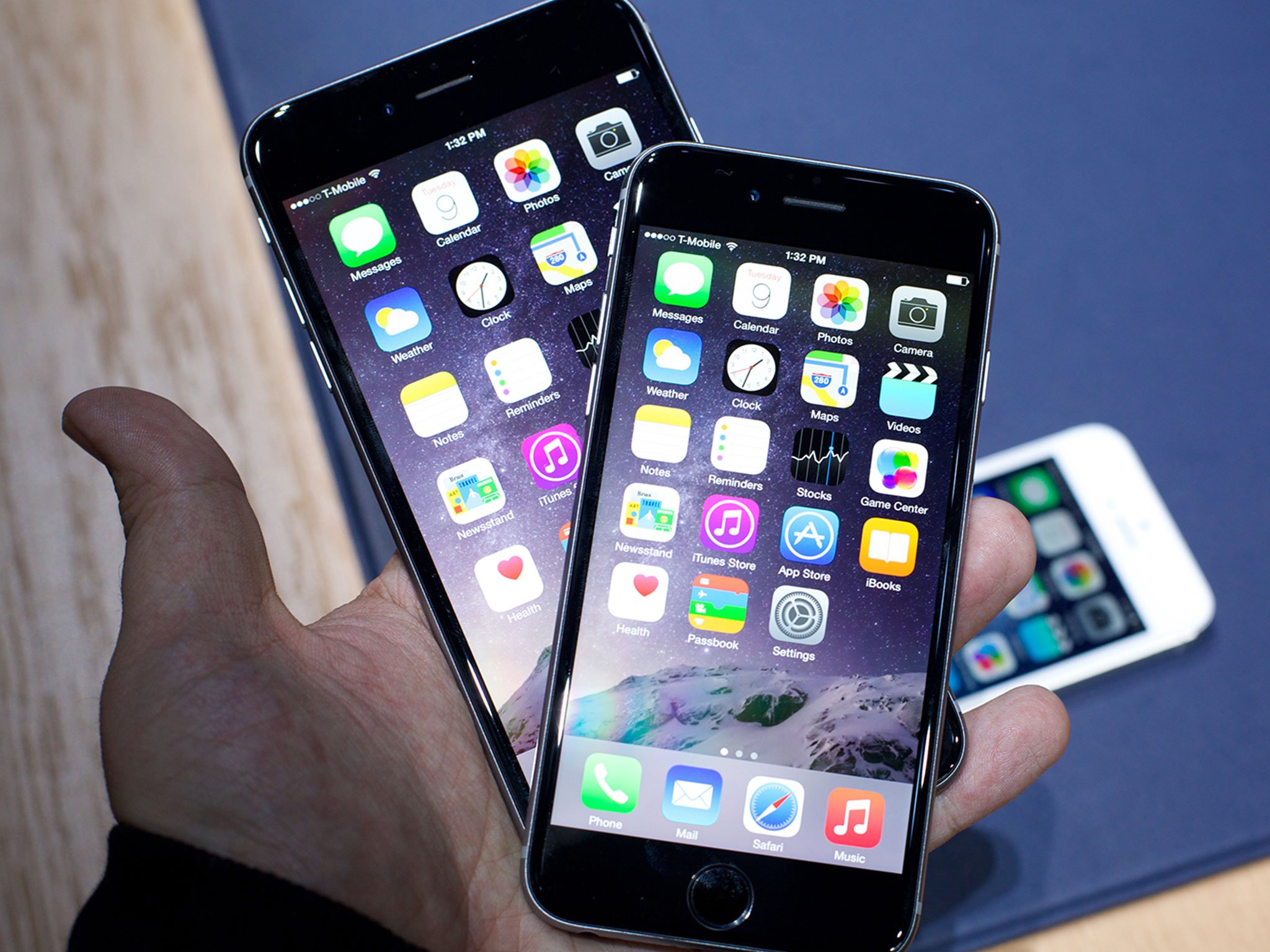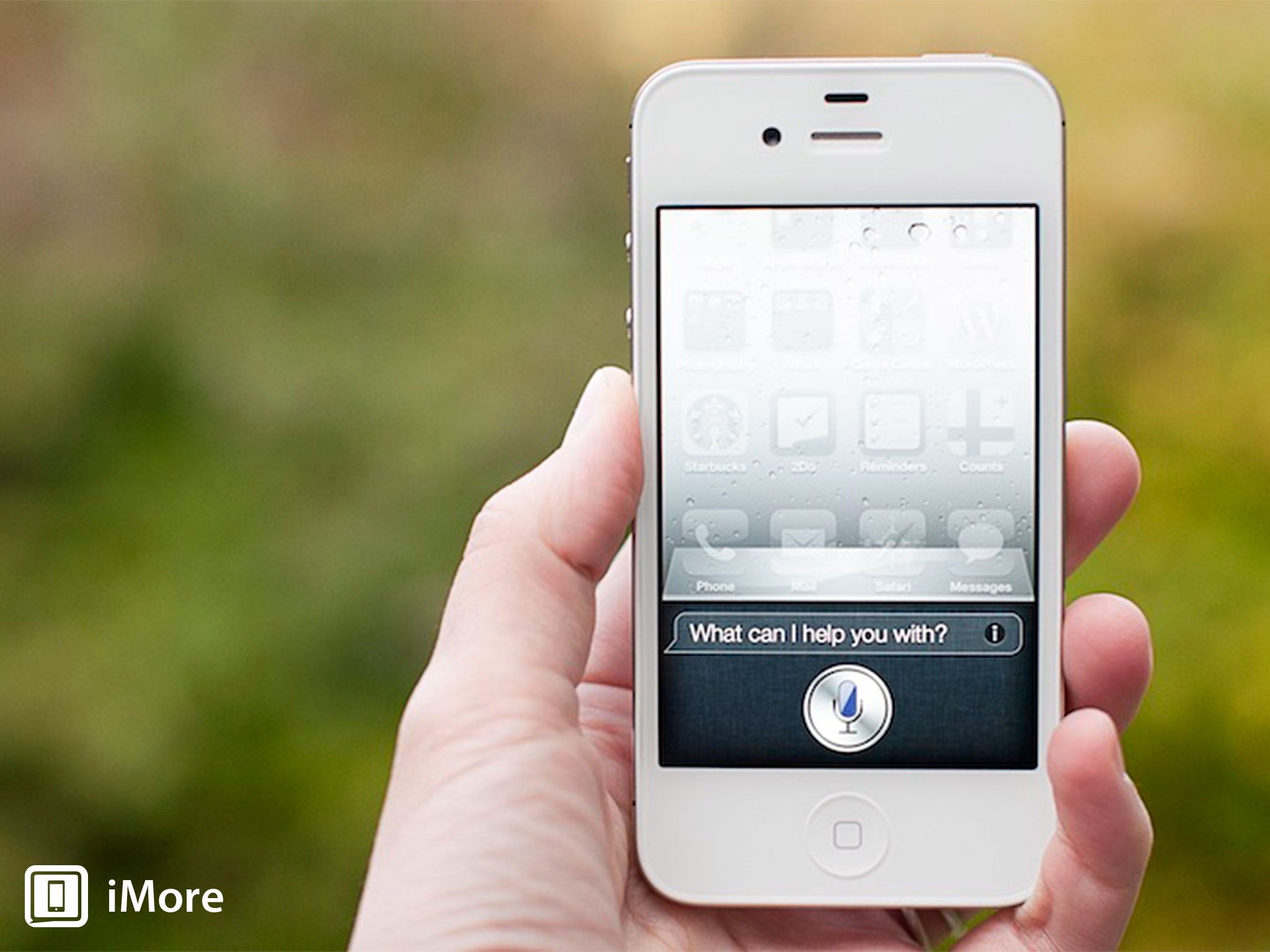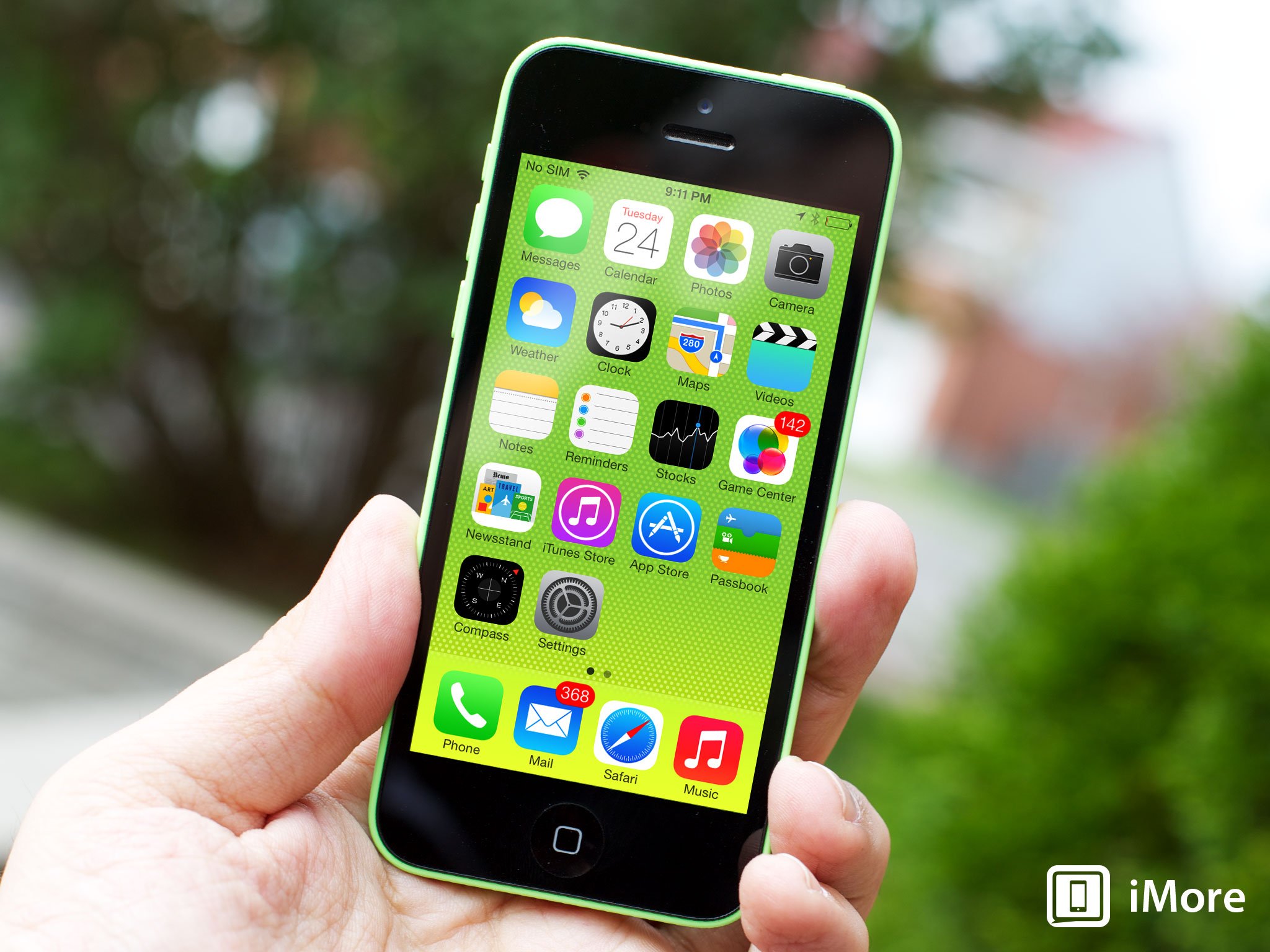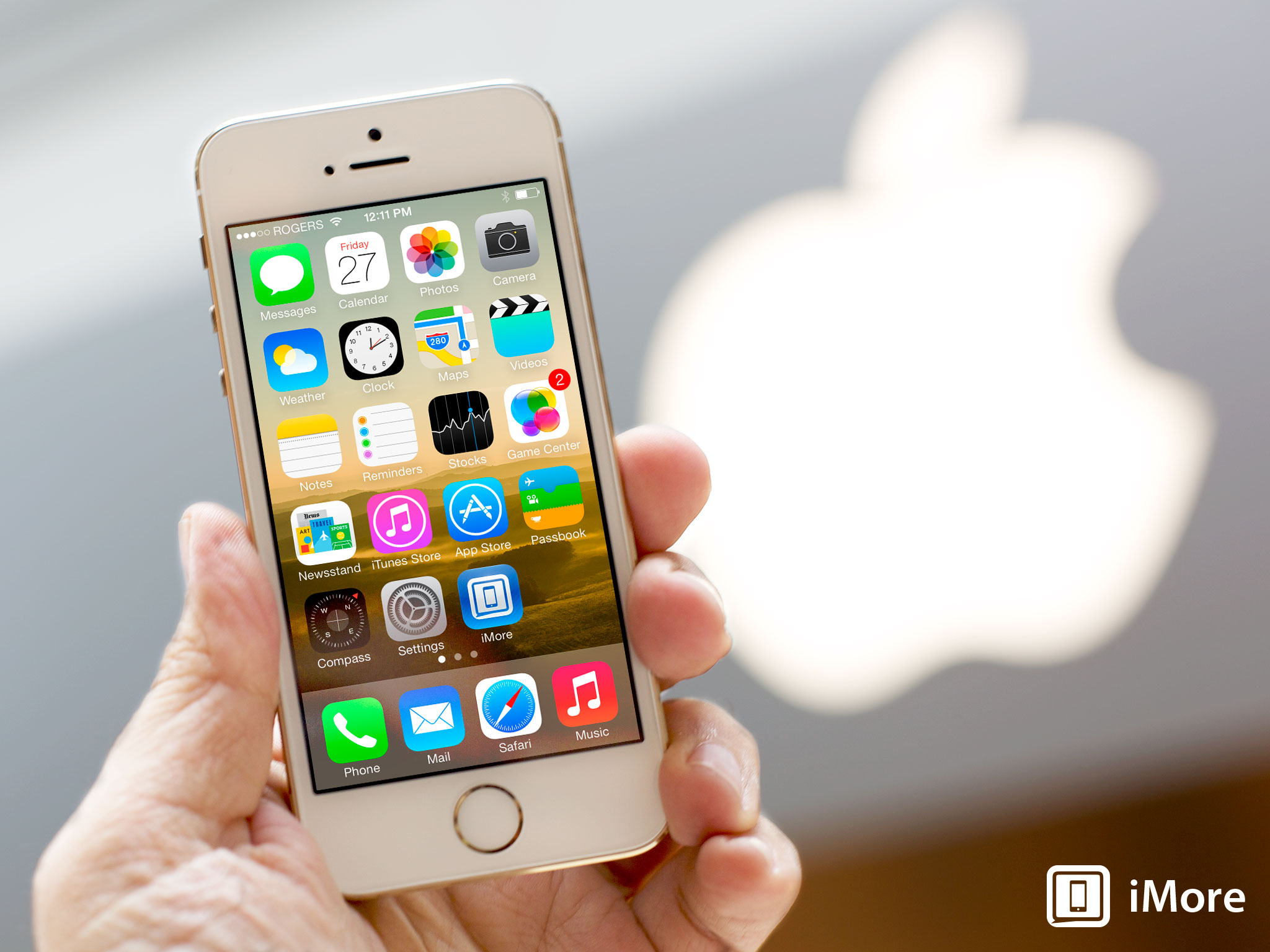Should you upgrade to the iPhone 6 or iPhone 6 Plus?

2014 iPhone buyers guide: How to decide if you should upgrade to the iPhone 6 or iPhone 6 Plus!
When new iPhones are introduced one of the toughest decisions to make is whether or not to upgrade to the latest and the greatest. If money is no object, it won't matter. If you're due an upgrade on contract, it comes down to whether or not the new features in the iPhone 6 or iPhone 6 Plus are compelling enough to be worth $200 or $300 or more to you. If you're not due an upgrade, or if you don't buy on contract, then that decision escalates to $650, $750, or more. So what are the pros and cons of upgrading to the iPhone 6 or iPhone 6 Plus, and when does the cost get overwhelmed by the value? Let's take a look...
iOS 8 compatibility
The ability to run iOS 8, and to be compatible with iOS 8 apps, is a major consideration. The iPhone 4 won't be able to do either. The iPhone 4s will be, but in limited and likely not entirely enjoyable form. The iPhone 5 and iPhone 5c will be good. The iPhone 5s will be darn good.
If you have anything less than an iPhone 5, you're going to want to upgrade. If you have anything less than an iPhone 5s, you're going to want to think about it.
Screen size
The iPhone 5, iPhone 5c, and iPhone 5s all have smaller, 4-inch screens. So even though they can run iOS 8, it'll be at 1136x640 pixel form.
The iPhone 6 has a 4.7-inch screen with 1336x750 pixels, and the iPhone 6 Plus has a 5.5-inch screen with a 1920x1080 inch screen.
That means you won't be getting the best experience from new apps going forward, and with the iPhone 6 Plus, the ability to run Apple's apps in iPad-style (two column layout) in landscape mode. You'll also get Display Zoom which, if you'd rather not have more pixels but bigger ones, can help you read and see everything better.
If you like 4-inch or even 3.5-inch iPhones and aren't sure that bigger really is better, wait and try them in stores first.
iMore offers spot-on advice and guidance from our team of experts, with decades of Apple device experience to lean on. Learn more with iMore!
If screen size matters to you, especially if the ability to run iPad-style apps on an iPhone in landscape is interesting to you, you may want to upgrade.
LTE and Wi-Fi
The iPhone 4s tops out at HSPA 14.4mbps and can't access the much faster DC-HSPA+ 40mbps or LTE 100+mbps networks. That means you'll be stuck on dial up in an increasingly broadband world.
The iPhone 5 supports LTE, and the iPhone 5c and iPhone 5s support an incredible range of LTE bands, but they all top out at 100mbps. They're also limited to 802.11n Wi-Fi.
The iPhone 6 and iPhone 6 Plus support LTE Advanced and can go all the way to 150mbps. They also support 802.11ac Wi-Fi, matching Apple's latest generation AirPort Extreme base stations.
If you're in an area with LTE Advanced and/or if you have an 802.11ac router, moving data faster lets radios power down faster and ultimately saves battery life. You may want to upgrade for both.
Camera
The iPhone 4S has a fairly decent 8mp/1080p rear iSight cameras but still a poor front FaceTime camera. The iPhone 5 and iPhone 5c have slightly better iSight cameras and the iPhone 5c has a better FaceTime camera as well with backside illumination. The iPhone 5s has the same better FaceTime camera and an even better iSight camera with support for burst mode and 120fps slow motion video.
The iPhone 6 and iPhone 6 Plus, however, have better cameras still. Most of the differences are subtle and, unless you're a camera enthusiast or take relentless selfies or slow-mos, not really worth an upgrade from the iPhone 5, iPhone 5c, or iPhone 5s.
However, the iPhone 6 Plus has optical image stabilization (OIS) which makes it much better for low-light photography.
Taken together if your iPhone serves primarily as your camera, you might want to upgrade, especially to the iPhone 6 plus.
Lightning connector
The iPhone 4S has the old 30-pin Dock connector. While there remain legacy accessories for that connector, all new iOS devices now use the Lightning connector. The iPhone 5, iPhone 5c, and iPhone 5s all already have Lightning connectors.
If you have an iPhone 4s, Lightning is just one of many, many reasons you might want to upgrade.
Touch ID
With the exception of the iPhone 5s, none of the older iPhone models can use Apple's Touch ID fingerprint identity sensor.
That means, if you want to be able to unlock your iPhone or authorize iTunes purchases at the touch of the finger, you'll want to upgrade.
Apple Pay
Apple Pay stores your credit card information on a secure element inside the iPhone 6 and iPhone 6 Plus. With it, you can tap-to-pay at NFC terminals in stores, or shop online using apps from Apple, target, and more.
It's like a digital wallet, authorized by passcode or Touch ID, and it's not available on any older iPhone models. So, if you want it, you'll want to upgrade.
Should you upgrade from the iPhone 4 (or earlier)?

The iPhone 4 was released in June of 2010 but was still available at $0 on contract until September of 2013 (and is still available even now in China and India). If you're not on contract, or are eligible for an upgrade for any reason, you should definitely take it.
If price is the most important factor, the $0 on-contract position has been taken over by the iPhone 5c. It gives you not only a 4-inch screen but the much more powerful Apple A6 processor, the new Lightning connector, and fast LTE cellular networking. It comes in bright plastic colors. Whether it will get iOS 9 next year, however, remains unknown, so in addition to missing out on the even bigger screens, it may not be a great long term investment.
Starting at $100 on contract, the iPhone 5s will give you an even better Apple A7 processor with M7 motion coprocessor, a better iSight camera, and the Touch ID fingerprint authentication system. No bigger screen, but a lot of everything else, and it will likely get iOS 9 next year.
Starting at $200 or $300 on contract, however, if you can afford an iPhone 6 or iPhone 6 Plus, however, they'll give you everything modern iPhones and iOS 8 have to offer, and will serve you well for years to come.
Yes, you should strongly consider upgrading.
Should you upgrade from the iPhone 4S?

The iPhone 4S was introduced in October of 2011 and was available for $0 on contract until this year. If you got one anytime in the last year, you're still on contract. Early termination fees (ETFs) could make it financial unattractive to upgrade.
If you're not on contract, or are eligible for an upgrade for any reason, you should consider it. The iPhone 5c is now $0 on contract, gives you not only the new, bigger, 4-inch screen, and also the Lightning connector, the much more powerful Apple A6 processor, and fast LTE cellular networking. It comes in bright plastic colors. Whether it will get iOS 9 next year, however, remains unknown, so in addition to missing out on the even bigger screens, it may not be a great long term investment.
Starting at $100 on contract, the iPhone 5s will give you an even better Apple A7 processor with M7 motion coprocessor, a better iSight camera, and the Touch ID fingerprint authentication system. No bigger screen, but a lot of everything else, and it will likely get iOS 9 next year.
Starting at $200 or $300 on contract, however, if you can afford an iPhone 6 or iPhone 6 Plus, however, they'll give you everything modern iPhones and iOS 8 have to offer, and will serve you well for years to come.
Yes, you should strongly consider upgrading.
Should you upgrade from the iPhone 5?

The iPhone 5 was introduced in September of 2012 but was discontinued in September of 2013.
If you're not on contract, or are eligible for an upgrade for any reason, there are a few reasons to consider upgrading. The iPhone 5s will give you a better Apple A7 processor with M7 motion coprocessor, a better iSight camera, and the Touch ID fingerprint authentication system. However, it's not a major leap up from the iPhone 5 and it's also $100 on contract.
Starting at $200 or $300 on contract, however, if you can afford an iPhone 6 or iPhone 6 Plus, however, they'll give you everything modern iPhones and iOS 8 have to offer, and will serve you well for years to come. You'll get a bigger 4.7- or 5.5-inch screen, NFC radio for Apple Pay payments, fast LTE Advanced and 802.11ac networking, better iSight and FaceTime cameras, optical image stabilization with the iPhone 6 Plus, and be future-proofed for a least a couple years to come.
If you've had an iPhone 5 since launch, take a look at the iPhone 6 or iPhone 6 Plus. Both are really good upgrades.
Yes, you should consider upgrading.
Should you upgrade from the iPhone 5c?

The iPhone 5c is essentially the same phone as the iPhone 5 with a new, fun, plastic coating. If you got one in the last year, you're likely still on contract. Early termination fees (ETFs) could make it financial unattractive to upgrade.
If you're not on contract, or are eligible for an upgrade for any reason, there are severals reasons to consider upgrading. The iPhone 5s will give you a better Apple A7 processor with M7 motion coprocessor, a better iSight camera, and the Touch ID fingerprint authentication system. However, it's not a major leap up from the iPhone 5c and it's also $100 on contract.
Starting at $200 or $300 on contract, however, if you can afford an iPhone 6 or iPhone 6 Plus, however, they'll give you everything modern iPhones and iOS 8 have to offer, and will serve you well for years to come. You'll get a bigger 4.7- or 5.5-inch screen, NFC radio for Apple Pay payments, fast LTE Advanced and 802.11ac networking, better iSight and FaceTime cameras, optical image stabilization with the iPhone 6 Plus, and be future-proofed for a least a couple years to come.
However, if you got an iPhone 5c last year, well you didn't opt for the more forward-thinking iPhone 5s then and you may be perfectly happy not to opt for the even more forward-thinking iPhone 6 models this year.
Upgrade only if you want to move from fun to forward thinking.
Should you upgrade from the iPhone 5s?

The iPhone 5s was released in September 2013, so it's still relatively new, and if you got it under a traditional 2-year contract you'll have early termination fees to worry about. If you got it under a newer, more flexible upgrade contract, however, then you have more options.
Starting at $200 or $300 on contract, the iPhone 6 or iPhone 6 Plus will give you everything modern iPhones and iOS 8 have to offer, and will serve you well for years to come. You'll get a bigger 4.7- or 5.5-inch screen, NFC radio for Apple Pay payments, fast LTE Advanced and 802.11ac networking, better iSight and FaceTime cameras, optical image stabilization and two-column apps in landscape with the iPhone 6 Plus, and be future-proofed for a least a couple years to come.
The iPhone 5s is an excellent phone and there's no need to rush out and upgrade. However, if you got the iPhone 5s because you wanted the cutting edge of technology, that edge is now cutting with the iPhone 6 and iPhone 6 Plus.
Upgrade only if you simply must have the latest and greatest.
Still undecided?
If you're still not sure about about upgrading to an iPhone 6 or iPhone 6 Plus , ask questions below or jump into our iPhone discussion forums and the best community in mobile will happily help you out!
Then, once you know, let me know why — or why not —in the comments so everyone else can benefit from your thoughts!

Rene Ritchie is one of the most respected Apple analysts in the business, reaching a combined audience of over 40 million readers a month. His YouTube channel, Vector, has over 90 thousand subscribers and 14 million views and his podcasts, including Debug, have been downloaded over 20 million times. He also regularly co-hosts MacBreak Weekly for the TWiT network and co-hosted CES Live! and Talk Mobile. Based in Montreal, Rene is a former director of product marketing, web developer, and graphic designer. He's authored several books and appeared on numerous television and radio segments to discuss Apple and the technology industry. When not working, he likes to cook, grapple, and spend time with his friends and family.
